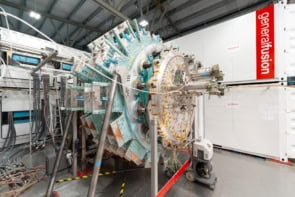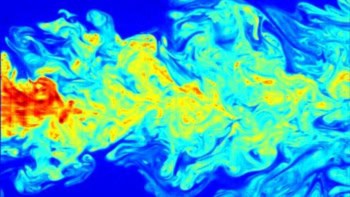When the Large Hadron Collider turns on next year, most physicists will be scouring the high-energy data for new particles such as the Higgs boson. Not Howard Georgi of Harvard University in the US, though -- he says he is on the look out for a new type of "stuff" altogether called "unparticles". If it exists, it would mean that our Standard Model of particle physics is not the whole story, and that things other than particles fill the universe (Phys. Rev. Lett. 98 221601).
All particles exist in a state with a certain energy, momentum and mass. In most of the Standard Model, particles of the same type cannot exist in another state with all these properties scaled up or down by a common factor – electrons, for example, always have the same mass regardless of their energy or momentum. But this is not always the case: massless particles, such as photons, can exist with their properties scaled equally. This immunity to scaling is called “scale invariance”.
Although theories exploiting scale invariance have been devised before, physicists accustomed to the Standard Model have been reluctant to think how they could be applied. This is because they would involve things unlike particles – the only known “stuff” in the universe – that do not necessarily have zero mass.
Georgi, on the other hand, has now considered how we could deduce experimentally whether any of this weird scale-invariant stuff, which he dubs “unparticles”, could exist. He suggests that the reason we haven’t seen any unparticles so far is that they couple with normal matter more weakly as energies get lower. If he is right, this means evidence for unparticles might show up in future experiments such as the Large Hadron Collider (LHC). “The very confusing question of ‘What does unparticle stuff look like?’ gets replaced by a simpler question: ‘How does unparticle stuff begin to show up as the energy of our experiments is increased?'” he said.
Unparticles would have properties in common with neutrinos, which have almost zero mass and are therefore nearly scale invariant. Neutrinos barely interact with matter – most of the time physicists can only infer their presence by calculating the “missing” energy and momentum after an interaction. By looking at the same interaction many times, a probability distribution is built up that tells more specifically how many and what sort of neutrinos are involved.
Georgi thinks that a similar technique could be used to search for evidence of unparticles. According to scale invariance, a distribution containing unparticles would become apparent because, oddly, it would look like a distribution for a fractional number of massless particles.
“Even if we don’t [see unparticles at the LHC], I believe that analyses like this are useful because they can shake us out of preconceptions that could cause us to miss important physics as the energy of our machines grows,” he said.



